Tehran’s no good, very bad options, and why only diplomacy can head off an Iranian bomb
By Pranay Vaddi | July 3, 2025
 After air strikes on Iran's nuclear infrastructure and decapitation strikes on senior military, political, and scientific officials, Supreme Leader Ayatollah Ali Khamenei must decide whether to listen to hardliners in Tehran pushing for a testable nuclear weapon or moderates still seeking international legitimacy of Iran's nuclear energy program. (Credit: Office of the Iranian Supreme Leader / Khamenei.ir, modified by François Diaz-Maurin)
After air strikes on Iran's nuclear infrastructure and decapitation strikes on senior military, political, and scientific officials, Supreme Leader Ayatollah Ali Khamenei must decide whether to listen to hardliners in Tehran pushing for a testable nuclear weapon or moderates still seeking international legitimacy of Iran's nuclear energy program. (Credit: Office of the Iranian Supreme Leader / Khamenei.ir, modified by François Diaz-Maurin)
Following Israel’s air attacks against Iran’s nuclear sites, which the United States joined a week later through Operation Midnight Hammer, Iran’s Supreme Leader Ayatollah Ali Khamenei now faces unpleasant options. As the US intelligence community is still assessing how far Iran’s nuclear program has been set back, it is clear, by all accounts, that Iranian nuclear facilities were damaged. Iran may retain sufficient capability, knowledge, and nuclear materials to restart a nuclear program—something that an intercepted call of Iranian officials seems to confirm. In doing so, Iran may focus on a more streamlined effort, rather than reconstructing and reusing the damaged facilities at Fordow, Natanz, and Isfahan.
But Iran must tread carefully.
A failure to negotiate a new deal with the United States, likely involving the United Kingdom, France, and Germany (the “E3” nations who participated in the original Joint Comprehensive Plan of Action or JCPOA), may result in the Europeans pursuing the “snapback” of United Nations Security Council sanctions against Iran’s economy, military, and nuclear program by an October deadline. More seriously, such a stance may trigger additional military action by Israel and the United States. On the other hand, concluding a truly comprehensive new deal when Iran is in its weakened state may mean being forced to accept draconian limitations on its nuclear efforts, eliminating its ability to develop a secret weapons program and eroding whatever domestic and international legitimacy the program may provide to Khamenei.
Iran has an incentive to continue diplomacy—but, also, a strong basis for moving more purposefully toward a nuclear weapon. Instead of the sprawling quasi-civilian program of the past, Iran may recover the necessary technical capacity and know-how for a streamlined, covert effort to pursue a nuclear weapon. Iran is more likely to pursue a nuclear weapon through a clandestine program, limiting cooperation with the International Atomic Energy Agency (IAEA) to avoid detection of its undeclared activities, particularly after feeling the agency applied a double standard by refusing to criticize the United States and Israel for attacking nuclear facilities, despite its past condemnations of Russia’s attacks on Ukraine’s nuclear facilities. Iran could also take advantage of US officials’ claiming an overwhelmingly successful US military operation, a lack of popular support for more expansive US military action in the Middle East, and the White House’s strong commitment to a recently negotiated ceasefire arrangement between Iran and Israel to delay further military action while it pursues a bomb.
Iran’s failed “threshold” proliferation strategy. Iran’s recent proliferation strategy—one in which it added advanced centrifuges and stockpiled enriched uranium to pressure the United States into diplomatic concessions during direct and indirect negotiations spanning three administrations—proved to be flawed. After buttressing Iran’s negotiating stance following the US withdrawal in 2018 from the JCPOA, everything changed with the Hamas attack on Israel on October 7, 2023.
Iran’s proliferation strategy did not exist in a vacuum: It was possible as long as Iranian proxies and other asymmetric threats functioned to deter actions against Iran’s interests. But in the wake of the October 7 attacks, Israel degraded Iran’s regional deterrence-by-proxy strategy and air defense assets. Now, Iran’s nuclear ambiguity—being at the threshold of assembling one, or several, nuclear weapons—was laid bare as an inadequate deterrent on its own.
This “threshold” proliferation strategy consisted of three main components: First, develop the robust technical expertise, bureaucracy, and infrastructure for a “peaceful” nuclear deterrent—a non-military nuclear program that easily provided a foundation for a military nuclear program. Then, deter Israel and the United States from direct military action by holding out the chance that Iran’s Supreme Leader could decide to pursue a bomb if attacked. Finally, provide diplomatic leverage for negotiations with the United States and Western allies, trading diminishing limits on an expanding nuclear program for economic relief and threatening to deploy additional centrifuges to deter diplomatic or economic pressure.
Israeli and US actions of the past two weeks demonstrated that all three components have been partially or fully destroyed, largely because of the deteriorated state of Iran’s air defenses after a series of Israeli strikes last October.
This month’s Israeli and US air strikes caused severe damage to Iran’s nuclear infrastructure, and Israel also killed senior political, military, and scientific officials who were important to Iran’s nuclear program. How much damage exactly is unknown. A “complete obliteration,” as claimed by President Donald Trump and his administration, is unlikely. But the strikes may hamper Iran’s nuclear operations, if not for years, at least for months.
By striking out of the blue on June 13, Israel demonstrated that Iran’s nuclear program and the threat to move toward a weapon did not deter Israel’s military and intelligence services from acting preemptively and with impunity. In doing so, and by dragging the United States into the war, Israel also changed longstanding US policy, which seemed predicated on resorting to military action only if there was evidence that Iran’s Supreme Leader had decided to pursue a bomb or that Iran covertly developed sufficient technology for a weapon—neither of which seemed to be the case before the June 20 US air strikes.
Iran’s creeping nuclear program is now in shambles. While claims of a “complete obliteration” are imprecise and likely overblown, Iran’s three main nuclear sites absorbed substantial attacks, and Iran’s ability to quickly enrich uranium is, for now, much diminished from what it was two weeks ago. At a minimum, the damage to sensitive centrifuge areas means that Iran may not be able to recover them for later use. But it also means that Iran now has less capability to trade away centrifuges or centrifuge operations in arms control negotiations in exchange for concessions it seeks.
Iran’s approach to its nuclear program was also likely a fragile compromise between moderate and hardline elements in Tehran. Some of the nuclear scientists and military officials who survived the Israeli decapitation strikes may now push for a testable nuclear weapon. In retrospect, they may feel Iran should have continued the Amad Plan, a secret plan from 1989 to 2003 that was intended to produce weapon-grade (90 percent) uranium from less-than-five-percent enriched uranium, develop a range of weapons, and ensure regime survivability. While reports on Iran’s consideration of certain “weaponization” activities are vague and subject to interpretation, Iran’s hardliners may push to expand these efforts to make the threat of a future Iranian bomb—not just an enrichment capability and uranium stockpile—much more serious.
Moderates, on the other hand, thought that developing an indigenous nuclear energy industry would provide Iran with international legitimacy, technology for a weapons program if diplomacy failed, and domestic pride to bolster the regime’s popularity. In principle, such a plodding approach could stabilize international angst about Iran’s nuclear program, and Iran did advocate for its “rights” under the Nuclear Non-Proliferation Treaty as a non-nuclear weapon state looking to harness nuclear technology for peaceful purposes. Plenty of non-aligned countries would agree with this approach. But today, Tehran may feel that it is better to follow former Chinese leader Deng Xiaoping’s maxim—hide your strength, bide your time—by committing to an agreement that may largely dismantle what remains of Iran’s enrichment capability while retaining the intellectual capacity necessary for a future weapons program, pursued in a much more covert fashion than before.
Previously, Iran’s proliferation strategy was an amalgamation of the views of these two groups. Looking ahead, Iran could use a similar hybrid approach to appease diverse camps in its political system and maximize its diplomatic and economic potential in disadvantaged circumstances. In essence, ending the current attacks while planning for future negotiations. But hardliners—fed up with Khamenei’s patient approach after more than a year of nearly uncontested Israeli air strikes on both critical infrastructure and on some of the hardliners themselves—may now be in the strongest position to consolidate power in Tehran and steer Iran through an exacting future toward a nuclear weapon.
Iran’s possible new proliferation strategy. Tehran will need to avoid an outright refusal to negotiate with the Trump administration and take advantage of President Trump’s desire for a strong, long-term ceasefire. His willingness to pressure both Israel and Iran to avoid further military action, as evidenced by a recent outburst, can work to Iran’s advantage. Iran can keep the door open to diplomacy, ensuring the US government works to preserve the ceasefire, creating space for negotiations fitting with President Trump’s desire for a deal.
Even an interim deal could result in sanctions relief and offer a lasting reprieve from Israeli attacks. The Trump administration may seek to bolster the current “mission accomplished” moment, showing that the president’s decision to strike Iranian facilities led to an elusive diplomatic breakthrough, while avoiding a complex arrangement with Iran that Trump considers unnecessary. For Tehran, a deal is not the singular goal; the goal is preservation of the regime, which the leadership may feel, at this point, requires operational nuclear weapons.
After following a patient strategy that remained short of pursuing a bomb, Iran’s hardliners may feel now is the time to push forward to a simple, testable uranium-based nuclear weapon. Iran will look to preserve and rebuild the necessary technologies and components for a nuclear weapons program. This could include centrifuges, uranium fuel, uranium metal production, and scientific capacity for a future weapons effort to ensure a nuclear “start-up” is primed for the future.
An Iran that redoubles its counter-intelligence efforts, builds a deeper and harder facility than Fordow to conduct its weapons-related work, and suspends cooperation with the IAEA may secure the purported benefits of a rejuvenated nuclear program even while negotiating with the West. All this work is sped up and more viable if US air strikes turned out to be only partially effective. Currently, the IAEA suspects Iran was able to secure at least 400 kilograms of uranium enriched to 60-percent purity before air strikes; nine weapons’ worth of fuel. Reconstituting this work on a smaller scale would provide Iran with the necessary elements of a covert nuclear weapons program.
Iran’s leaders are likely assessing whether an actual, effective arsenal—and threatening to use it—will have a much stronger deterrent effect than the process of reaching a bomb. North Korea provides an interesting example: The country committed to a diplomatic resolution to its weapons effort in the 1990s but did not feel the bargain was worth it or being implemented fairly in the latter part of the decade. Instead, North Korea covertly pursued a nuclear device that was revealed to the world in an explosive test in the early 2000s. Iran’s long game may follow a similar successful proliferation trajectory.
What should the United States do next? The US government must pursue the most stringent monitoring and verification measures possible in any renewed diplomacy and avoid the allure of a quick deal.
Abandoning nuclear diplomacy at this point will let Iran off the hook. While the Trump administration may feel a strong impetus to signal that US military action was singularly effective in stopping the program, permitting opacity on Iran’s nuclear program now would undo whatever benefit the United States hoped to gain. Eliminating the potential for Iran to “hide and bide” behind a temporary truce, negotiating process, and even an interim agreement—and then surprise the world with a nuclear weapon in the near- to mid-term—needs to be the focus of current negotiations.
The ability for Iran to dig deeper and resume past nuclear weapons work out of reach of US “bunker buster” bombs is demonstrably clear, as is the potential to move toward a weapon quickly based on existing capacity and know-how. That leaves diplomacy as the only practical answer to decisively heading off an Iranian bomb. In fact, Iran may already possess such a protected location at Isfahan, where tunnels may exist that are far deeper than those bombed by US B-2 bombers at Fordow and Natanz, and are out of reach of conventional weapons, foreign government experts, and international inspectors.
Beyond the classic focus on enrichment capacity and stockpiled uranium, US negotiators should also ensure that IAEA inspectors can detect any weaponization-related activities following the road paved by negotiators of the JCPOA. (Specifically, Section T of Annex 1 of the JCPOA contains commitments on the part of Iran not to engage in nuclear weaponization activities.) This can inform future pressure campaigns on the diplomatic front, to urge compliance, deter Iran’s withdrawal from the Nuclear Non-Proliferation Treaty, and any future attempts to keep IAEA inspectors away from undeclared nuclear sites. Iran turned off and on access for the IAEA as part of its negotiating approach with the West; currently, hostile Iran-IAEA relations may make sufficient monitoring and verification an incredibly difficult issue to negotiate.
Absent a serious diplomatic approach, the United States may face a more serious crisis down the road. The US and Israeli militaries may need to play a more regular game of cat and mouse with an Iranian nuclear program that goes underground and undetected. For example, attacks by Israel against Iraq’s Osirak nuclear reactor in 1981 set back Iraq’s development of a nuclear program, but they also led Saddam Hussein to drive his weapons of mass destruction programs underground, pursuing multiple pathways to such weapons. Saddam halted such work following the first Gulf War to comply with UN resolutions. But questions regarding Iraq’s program were left unresolved, leading to further conflict, at great cost to the United States and allies. Certainly, this is a future the Trump administration should seek to avoid with Iran.
However, if unsuccessful on the diplomatic track, a US administration committed to avoiding intervention in the Middle East may end up avoiding another Iraq debacle but facing another nuclear breakout à la North Korea. If regional tensions lead to further nuclear proliferation, Iran may not be the only new entrant to the nuclear weapons club, but could be followed quickly by its neighbors, the first of which would be Saudi Arabia.
Together, we make the world safer.
The Bulletin elevates expert voices above the noise. But as an independent nonprofit organization, our operations depend on the support of readers like you. Help us continue to deliver quality journalism that holds leaders accountable. Your support of our work at any level is important. In return, we promise our coverage will be understandable, influential, vigilant, solution-oriented, and fair-minded. Together we can make a difference.
Keywords: IAEA, Iran, Iran nuclear deal, Iran nuclear facilities, Iran nuclear program, Iran sanctions, Israel-Iran war, JCPOA, Khamenei, Operation Midnight Hammer, Operation Rising Lion, Trump administration, US attacks Iran, negotiations, nuclear proliferation, snapback, uranium enrichment
Topics: Nuclear Energy, Nuclear Risk, Nuclear Weapons









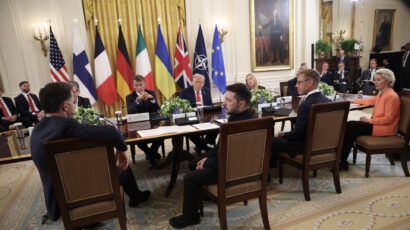

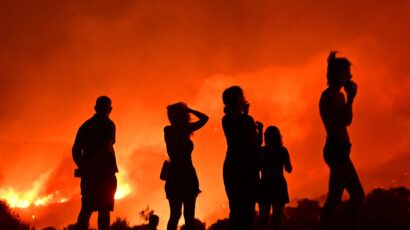
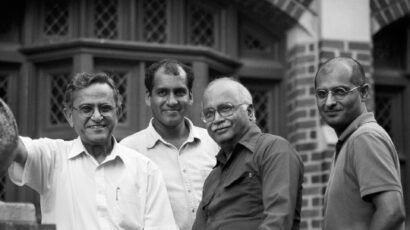
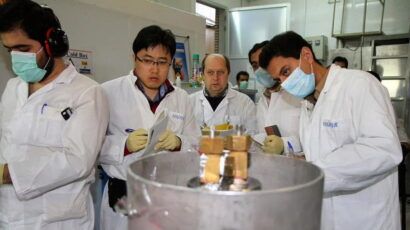
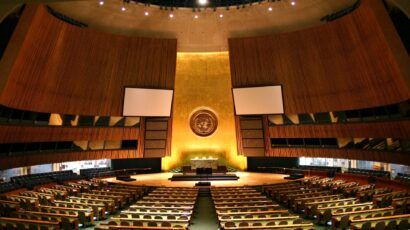

If only Iran would 100% allow inspectors uncensored visits to confirm their development is ONLY for nuclear powered generators. I’m for any country helping their people’s energy development away from fossil fuels. But their religious run political agenda that keeps denouncing Israel, with ‘death to both Israel and America’ as religious driven hate, it the main reason the West must keep up inspections. We all hope diplomacy towards freedom of BOTH sides living their lives within their current borders, without supporting terrorism can be a goal. As long as Iran intends to threaten with nuclear weapons development for a first… Read more »
But who’s Iran going to negotiate with once again? Trump?
Trump said negotiations would take place in a few days; then came the bombs; then he said he’d give it a couple of weeks for the dust to settle; then came more bombs; then he said that the limited objectives had been met; then he urges Iranians to flee Tehran, (much as the Israelis urge Palestinians to flee one section of Gaza for another); then he said the US could carry out an assassination; then he said it’s a twelve day war, and its time hostilities come to an end; Trump was advised to scrap the agreement Iran had with… Read more »
The author has neglected to mention Israel’s own policy of “nuclear ambiguity” (undisclosed nuclear weapons) and rejection of the NPT, which is one key factor at the very root of this crisis.
Iran’s supposed nuclear ambitions are unintelligible without this context.
Israel’s widely acknowledged nuclear posture weakens the legitimacy of any obligations the NPT places upon Iran, as did the US-supported unilateral attacks on Iran.
A WMD-free Middle East is surely the only lasting solution here, as per the Middle-East Treaty Organisation.
The ongoing clandestine nuclear warhead development program in the region belongs to a non signatory of the nonproliferation agreement; a nation currently carrying out a genocide. Who is the pot that calls the kettle black?